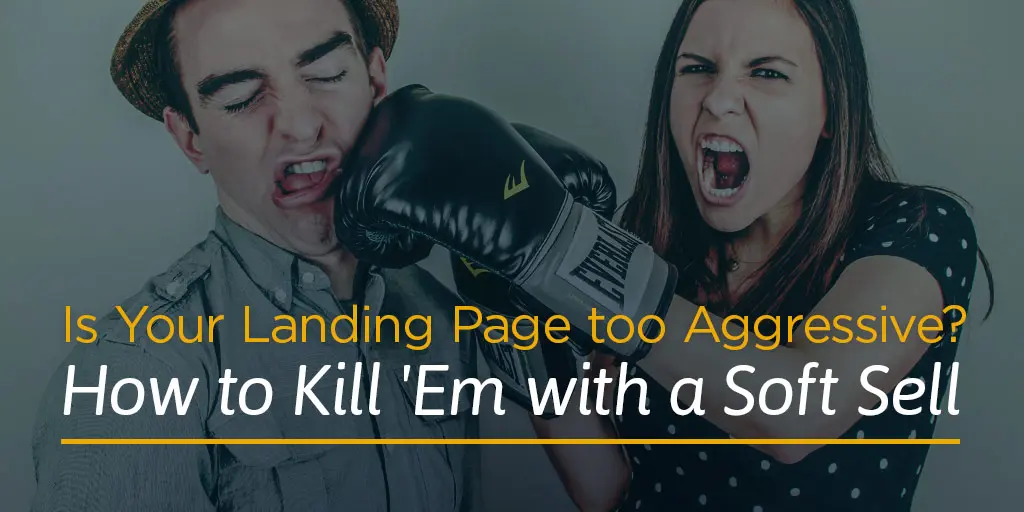
In the world of advertising, there’s two kinds of pitches: “buy it now or else I’m going to punch you in the face because you’re so stupid,” or… “hey, this is really going to help you and here’s why.” You’d be surprised how many brands go for the first option, also known as the hard sell. This tactic can work: not because people like being punched in the face, but because passion can translate into excitement and convince people to buy.
That explains why ShamWow, the little absorbent towel that could, actually sold millions. The pitchman, Vince Offer, uses an in-your-face, don’t-think-just-buy hard sell technique that pushes customers into a sale.
Even if you haven’t seen the infomercial, just a trip to the ShamWow website reveals how frenetic and pushy the sale is:
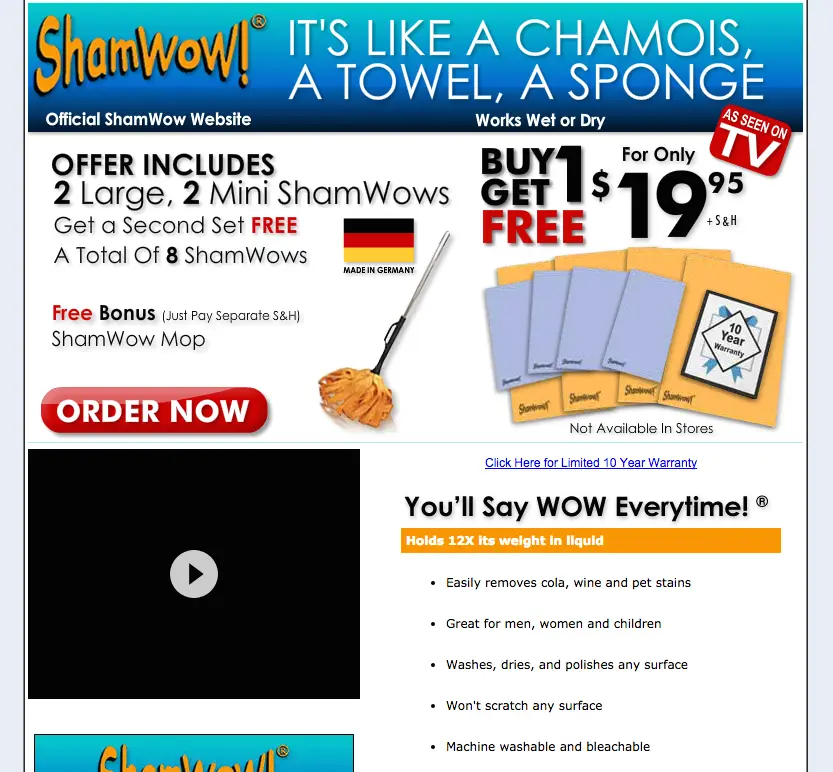
Courtesy ShamWow
But there’s a kindler, gentler way to people’s hearts, and this route will actually build your brand through trust instead of one-off impulse buys. If you can earn trust, you can earn a customer for life. You do that with a soft sell. Let’s take a look at what that means and how you can implement it on your next landing page.
We’ve compiled a list of 10 must-see landing pages that serve soft sell. Check it out. Subscribe to receive this extra resource. Grab your copy now
Here’s a quick definition of hard sell vs. soft sell:
A hard sell is a high-pressure technique where you’re trying to get the customer to buy right now, no second guessing, no mulling it over. It’s usually an impassioned plea. The hard sell employs several different tactics, but the one used most often is scarcity.
Two examples of the hard sell are:
By the way, you’ll recognize a hard sell because there’s sure to be plenty of exclamation marks throughout the copy.
By contrast, the soft sell is a low-pressure, easygoing, “I want you to have all the facts to make your decision” technique. It’s friendlier, more conversational, less desperate, and more relatable. It’s about building relationships. It doesn’t push the customer into making a decision right away: instead, it presents the information and casually offers the option to buy.
You may be scratching your head wondering how this is preferable to the hard sell. Great question, and here’s the answer:
If you want to develop a relationship of trust, your customer needs to believe you are an authority who understands their pain and is offering them the best solution. A hard sell preys on fear. It relies on domineering personalities that can manipulate with passionate phrasing.
On the other hand, a soft sell appeals to the customer’s sense of logic and reasoning. The customer gets to learn more about what you offer before actually purchasing, subscribing, signing up, etc. The customer who converts because of a soft sell landing page will do so because they believe you are the best choice after all. That’s one of the top ways that you develop customer loyalty and organic referrals like a boss.
Ways to Soft Sell
1. Tell a Story
One of the best ways to tell your story is with video. Did you know that visitors are 64% more likely to purchase an item after watching a video? That’s why, whether you’re selling a product, service, or idea, you need to have a video on your landing page that tells a story.
It doesn’t have to be fancy. The story that you tell can simply be addressing the pain points of your audience and how to effectively use your product. Here’s an example from Optopus (what a fun name:)
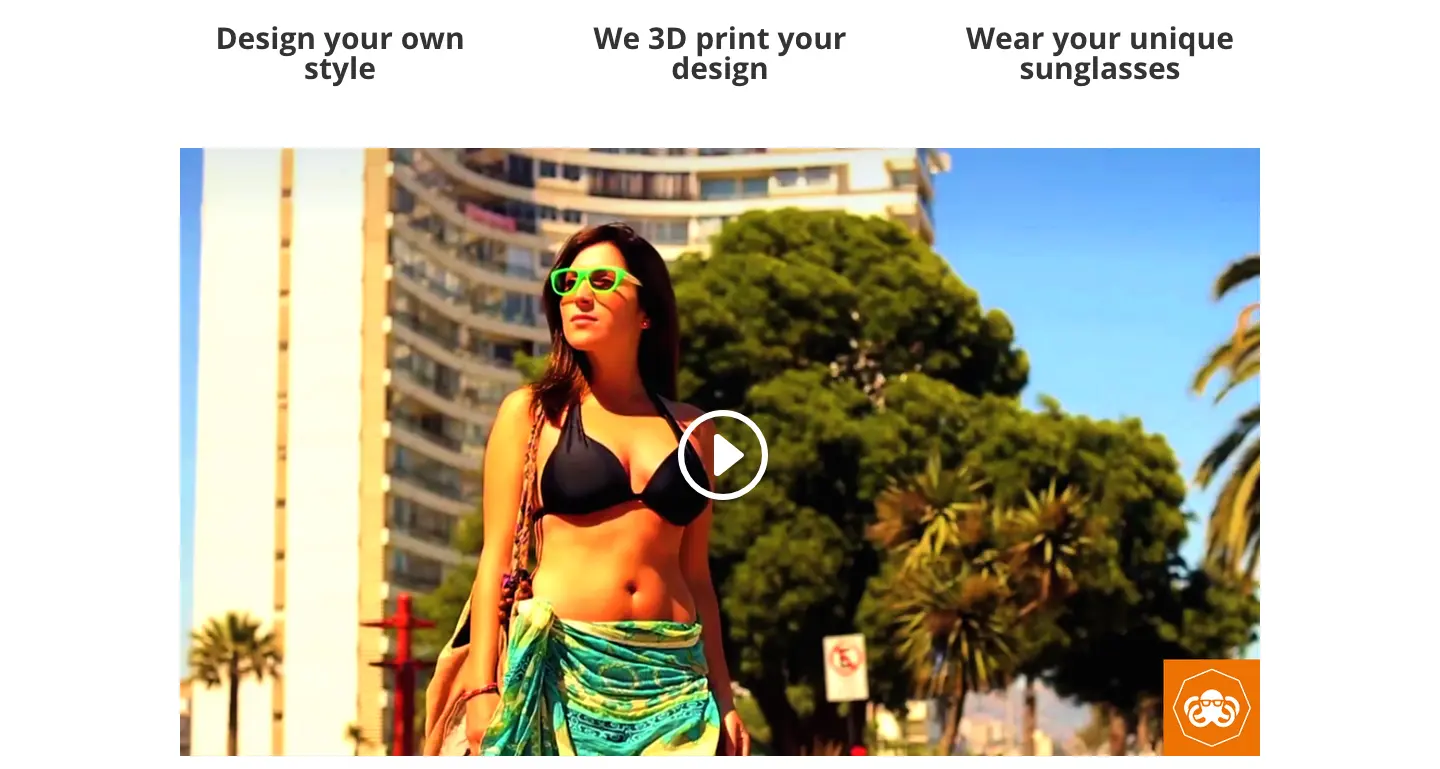
Courtesy Optopus
One of the first things you’ll notice on this landing page is the lack of words. It’s mostly visual. But they do include video. In fact, visitors get two videos on this landing page– one that quickly addresses a common problem and presents Optopus as the solution, and a second that shows visitors how to design their own product.
The first video uses storytelling to effectively sell the product.
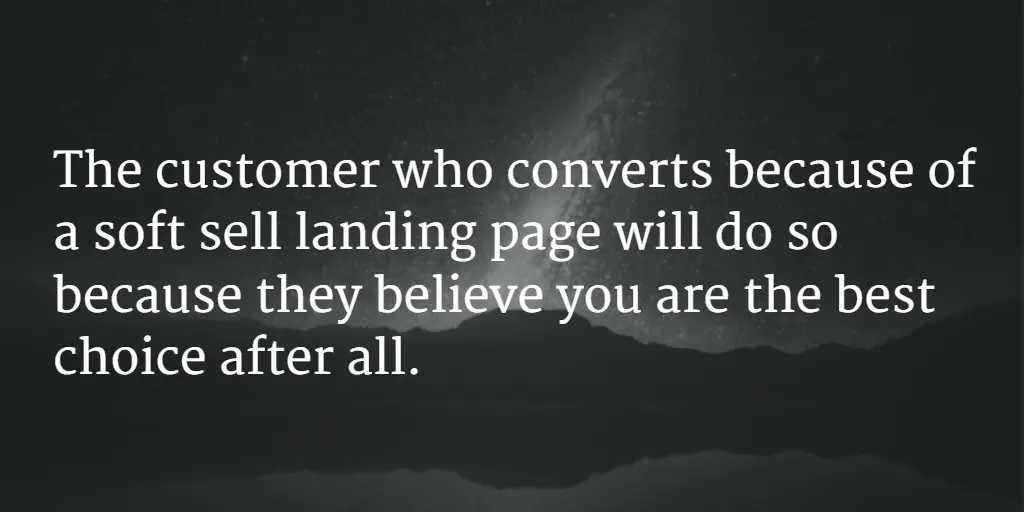
2. Be Relatable
AppSumo did something crazy, y’all. They spent almost $15,000 on their landing page. But, if you don’t have $15,000 to spend a website (psst, I can guarantee we have better prices), you can still learn from their page.
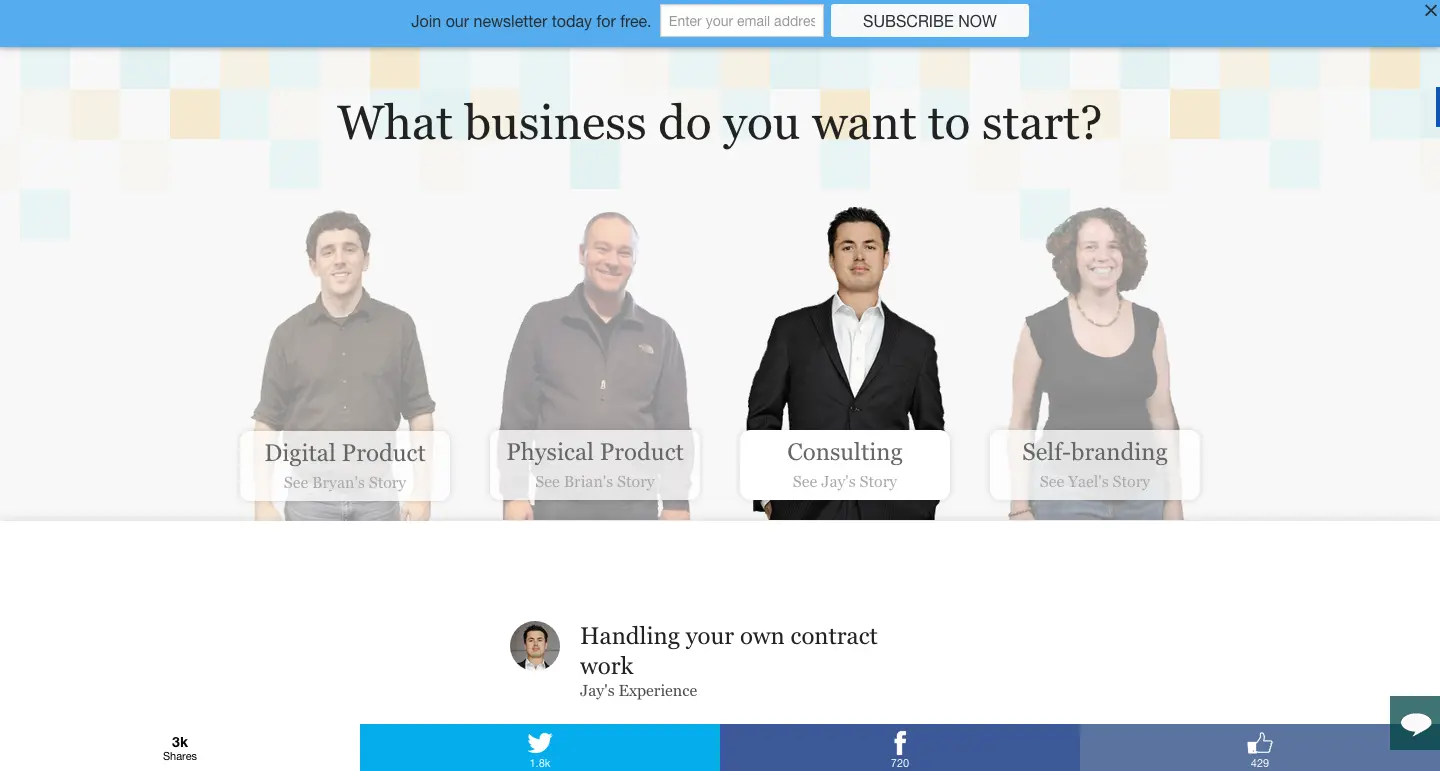
Courtesy AppSumo
AppSumo has created a relatable page. That means, whether you’re making a digital product, a physical product, consulting, or self-branding, you will see your story related in the experiences on this page. Not only does this landing page go strong on social proof, it positions itself as an empathetic partner that understands your struggles and will teach you how to be successful.
The genius here is that it’s not a hard sell. It spends a lot of time showing the visitor what to expect and how this program will work for them, but it does so by pulling from real stories of real people.
3. Educate the Consumer
Ever heard of Edgar? It’s a social media automation app that’s like Buffer’s over-achieving little sister. In an effort to differentiate themselves from HootSuite, the folks at Edgar created this nifty landing page:

Courtesy Meet Edgar
The sell here is incredibly soft. Of course the overarching theme is to “meet” or subscribe to Edgar, but the technique is simply to inform. This page presents Edgar as the most rational and balanced choice. It’s heavy on content and by the end of the page, you’ll have everything you need to make an informed decision.
4. Give Social Proof
The final element to an effective soft sell landing page is incorporating social proof. We talked briefly about this with AppSumo before, but it deserves its own category. One of the ways to get people to trust you is by showing them that other people trust you. Check out how Mosaic uses social proof to encourage visitors to become customers:

Courtesy Hey Mosaic
The social proof is a collection of endorsements on a carousel slider at the bottom of the page. Users can also click on the brand’s icon to read the endorsement. It’s clever to place social proof at the bottom of the landing page so that it’s the last thing a visitor sees before deciding whether to pull the trigger. I also love social proof towards the beginning of the landing page for maximum visibility.
Final Thoughts
You don’t have to threaten your visitors into buying from you. In fact, please don’t. Give them a reason to buy from you with a soft sell that educates. While a soft sell won’t land you on a late night infomercial, it will earn your customer’s trust. Or your money back!
We’ve compiled a list of 10 must-see landing pages that serve soft sell. Check it out. Subscribe to receive this extra resource. Grab your copy now